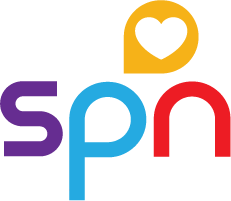Virtual Nursing Case Studies
As pediatric nursing workloads increase, virtual nursing is taking on a more prominent role in the profession. The Society of Pediatric Nurses (SPN) is partnering with leading pediatric nursing units that are among the early adopters of virtual nursing in pediatric settings to strengthen understanding of emerging trends in virtual nursing by collecting and sharing data. If you want to start conversations about virtual nursing in your organization, click the link below to access our Pediatric Virtual Nursing Considerations Guide. Continue the discussion around virtual nursing, by joining our virtual nursing community on The Hive, a free online community for pediatric nurses to connect. This group is open to all interested in exploring virtual nursing, even if you are not a member of SPN.
Implementing Virtual Nursing at Children's Hospital Los Angeles (CHLA)
Background
Children’s Hospital Los Angeles (CHLA) embarked on a virtual nursing initiative to address rising workload demands, high nurse turnover, and efficiency challenges in admissions and discharges. The program began on two high-turnover medical-surgical units and has gradually expanded in scope.
Key drivers for implementation included:
- Cost-effectiveness: Reduce overtime and delays in admissions/discharges.
- Staff retention: Alleviate stress on bedside nurses, reducing turnover.
- Workflow efficiency: Support nurses in managing documentation, charting, and patient education.
Program Design & Technology
- Units Involved: Two medical-surgical units, including one with transplant patients.
- Staffing: ~18 virtual nurses, Monday–Friday, 8 AM–8:30 PM.
- Technology: Amwell platform integrated with Oracle Health EHR; iPads in patient rooms; communication via Teams, phone, and Google Drive.
- Responsibilities: Admissions, discharges, education, chart reviews, care plans, post-discharge check-ins.
Implementation & Change Management
- Staff engagement: Product managers shadowed nurses pre-launch.
- Training & buy-in: Staff meetings, governance sessions, scripted scenarios, competitions.
- Resistance: Addressed tech anxiety with role clarity, peer support, and reinforcement.
Outcomes & Impact
- Efficiency: Faster admissions/discharges over time.
- Bedside nurse relief: Reduced workload, more focus on direct care.
- Retention: Early signs of reduced turnover.
- Patient satisfaction: Improved scores; families appreciated uninterrupted attention.
- Safety & quality: Virtual nurses caught documentation gaps and prevented errors.
Challenges & Lessons Learned
- Technology: Connectivity, iPad misuse, charging issues; solved with secure stations and anti-theft cords.
- Role clarity: Early confusion resolved with defined responsibilities.
- Pilot limitations: Infrastructure differences across buildings posed challenges.
Unexpected Benefits
- Collaboration: Improved communication across disciplines.
- Continuity: Post-discharge follow-ups bridged care transitions.
- Alternative staffing: Opportunities for nurses on light duty or unable to work bedside.
Future Directions
- Expansion to more units and weekend coverage.
- Creation of a dedicated cost center/unit with leadership.
- Potential for fully remote virtual nurses.
- Broader roles: parent equipment education, eating disorder monitoring, NICU car seat testing.
Key Takeaways
- Engage frontline nurses early: Align with their workflows.
- Prioritize role clarity: Define bedside vs. virtual nurse tasks.
- Start small, scale thoughtfully: Pilot in one unit/building.
- Support adoption: Use competitions, champions, and leadership visibility.
- View virtual nursing as workforce innovation: Supports retention, satisfaction, and career pathways.
Implementing Virtual Nursing at Atrium Health Levine Children's Hospital
Background
Atrium Health Levine Children’s Hospital’s LCH5 unit faced significant challenges with high patient turnover, throughput bottlenecks from the Emergency Department (ED), and heavy nursing workload. Unit leadership, inspired by research on virtual nursing and support of their CNO, saw an opportunity to pilot virtual nursing in pediatrics — a largely unexplored area.
This effort was driven by a desire to:
- Improve throughput from ED to inpatient unit.
- Support nurses experiencing high turnover and workload strain.
- Enhance patient safety and satisfaction.
- Close the experience gap on night shifts with less-experienced nurses managing high-acuity patients.
Workflows
- Focus on admissions, not discharges (families preferred more personal touch at discharge).
- Collaboration between bedside Admission/Discharge/Transfer (ADT) nurses and virtual nurses.
- Virtual nurses log hours and communicate primarily via chat with charge nurses and ADT nurses.
Staffing
- Pediatric-trained nurses prioritized, though adult nurses from virtual nursing team supported during early rollout.
- Hybrid staffing allows some team members to rotate between bedside and virtual roles.
Pilot Implementation
- Launched in LCH5 (16-bed unit) with high patient churn (up to 15 discharges/admissions in 12 hours).
- Initial rollout focused solely on admissions, with discharges only piloted in “easy” cases.
- Built on prior success with a virtual sitter program, easing staff adoption.
- Pilot expanded to overflow spaces and the ED to complete admissions before transfer to inpatient beds.
Technology: Artisite platform with mobile carts. Plans for embedded cameras in future expansions.
Outcomes & Measures
Metrics being tracked include:
- Volume: Over 850 admissions supported virtually in LCH5 within the first year. Initial rollout focused solely on admissions, with discharges only piloted in “easy” cases.
- Workload: Reduced bedside nurse workload hours tracked via Power BI dashboard. Pilot expanded to overflow spaces and the ED to complete admissions before transfer to inpatient beds.
- Staff Satisfaction: Buy-in increased over time; initial skepticism addressed by emphasizing virtual nursing as an added resource, not a replacement.
- Patient/Family Experience: Mixed — some families preferred in-person discharges; privacy concerns noted in open-bay rooms.
Challenges: Connectivity issues (“lag”), cultural adjustment for bedside staff, and balancing control between central virtual teams and unit-based leadership.
Lessons Learned
- Start small, scale gradually — a slower rollout helped refine workflows and build trust.
- Admissions are a natural entry point for virtual nursing; discharges require more nuance.
- Buy-in is critical — success depended on educating frontline staff, addressing fears of job loss, and demonstrating value.
- Flexibility is key — nurses retained autonomy to decide if virtual was appropriate per patient/family situation.
- Clear “why” is essential — aligning virtual nursing to identified pain points (throughput, workload, safety) strengthened adoption.
Future Directions
- Expansion to an additional unit with a 24/7 co-care model (every patient has a bedside nurse and a virtual nurse working as a team) and embedded cameras.
- Further integration of night shift mentoring using experienced virtual nurses to support younger bedside staff.
- Development of criteria for virtual discharges to expand beyond admissions.
- Refined data collection on throughput and ROI to better demonstrate impact.
Advice for other hospitals
- Be clear about goals and pain points before implementation.
- Anticipate skepticism and resistance; use transparency and champions to shift culture.
- Ensure technology readiness (connectivity, camera quality).
- Recognize that success depends on the person behind the camera — trusted, experienced nurses make the difference.
- Allow flexibility for bedside teams to decide when virtual is appropriate.
Implementing Virtual Nursing at Cincinnati Children’s Hospital
Background
Cincinnati Children’s Hospital Medical Center sought innovative solutions to address workforce challenges, improve care quality, and enhance patient and family experience. With leadership support from nursing and informatics, the hospital began exploring how virtual nursing—widely adopted in adult care—could be adapted for pediatrics.
The effort was driven by:
- Nurse workload and burnout.
- Nursing shortage and retention pressures.
- Evolving productivity and benchmarking standards.
- A strategic push toward team-based models of care.
Implementation, Planning & Engagement
- Shared Governance: Professional councils and interdisciplinary teams vetted concepts and helped prioritize workflows.
- Family Engagement: The Patient Family Advisory Council reviewed the model to ensure alignment with patient/family expectations.
- Pilot Units: Two medical-surgical units were selected—one with in-room cameras, the other using mobile carts—to test different technologies.
Workflows
- Admissions
- Discharges
- Patient education
- Coaching and mentoring
Surprising outcome: Admissions emerged as the most effective use case, while discharges and mentoring had slower adoption.
Staffing
- Virtual nurses are existing Cincinnati Children’s nurses who rotate between bedside and virtual roles.
- Approximately 10–12 virtual nurses currently serve across units.
- Staffing “sweet spot”: units of 40-50 beds.
Technology
- Platform: Avizia/Vizient telehealth client plus Epic EHR integration.
- Equipment: Mobile carts on one unit; in-room camera technology on another.
- Communication: Secure chat in Epic enables real-time coordination.
Outcomes & Measures
Metrics being tracked include:
- Nurse workload/time saved.
- Patient and family experience (via Qualtrics and QR code surveys).
- Admission and discharge process times.
- Documentation completion.
- Nurse engagement and retention.
Early Results
- Stronger uptake for admission workflows than discharge.
- Families report more complete, less distracted discharges when virtual nurses are used.
- Night-shift nurses value handing admissions over to virtual nurses, reducing patient sleep disruptions.
- Staff buy-in is growing, though cultural adaptation continues.
Challenges
- Culture change: Some nurses and families prefer in-person care; buy-in is uneven across units.
- Technology: Cart mobility and lack of full Epic integration create workflow friction.
- Data burden: Outcome data is scattered across multiple platforms, requiring significant manual tracking.
- Unit fit: Small-volume units (e.g., 17 beds) may not support sustainable virtual nursing.
Lessons learned
- Conduct a thorough discovery phase before selecting units – identify priority metrics for the unit to create buy-in and to identify what needs can be met by virtual nursing
- Start small, scale gradually to refine workflows.
- Unit culture heavily influences adoption; some areas are more ready than others.
- Engage frontline nurses and families early and often to build ownership.
- Avoid labeling as “virtual nursing” when working with families—emphasize that these are Cincinnati Children’s nurses, part of the care team.
- Robust implementation support (command centers, daily huddles, quick fixes) is critical in the first weeks.
Future Directions
- Expansion to bone marrow transplant and hematology/oncology units, where in-room technology supports advanced workflows like dual sign-off.
- Exploration of urgent care integration to improve discharge flow.
- Additional use cases, including wound care consults and pharmacy support.
- Development of a community of practice for virtual nurses.
- Publication of pediatric-specific outcomes, including use of a validated burden scale.
Advice for Other Hospitals
- Invest time in discovery: Assess unit needs, culture, and readiness.
- Empower units: Allow them to co-create workflows and goals.
- Secure leadership support: Buy-in from executives and managers is essential.
- Think about staffing early: Plan for how virtual roles integrate into overall FTE counts.
- Communicate clearly with families: Position virtual nursing as a seamless part of care, not an optional add-on.
|

